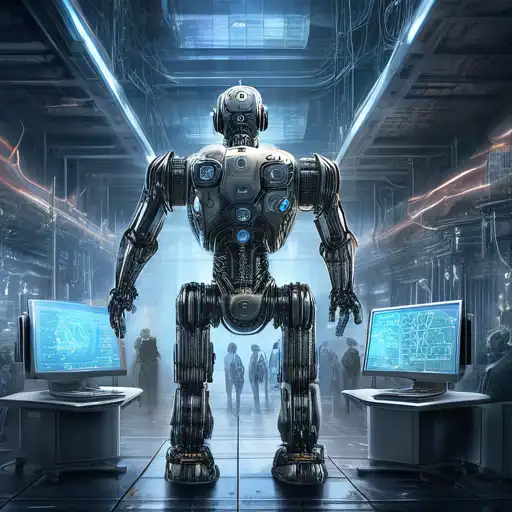Understanding AI and Machine Learning
In the realm of technology, Artificial Intelligence (AI) and Machine Learning (ML) are two of the most talked-about topics. While they are often used interchangeably, they represent distinct concepts with unique applications and capabilities. This article delves into a comparative study of AI and ML, shedding light on their differences, similarities, and how they are shaping the future of technology.
What is Artificial Intelligence?
AI refers to the simulation of human intelligence in machines that are programmed to think like humans and mimic their actions. The term may also be applied to any machine that exhibits traits associated with a human mind, such as learning and problem-solving. AI can be categorized into two types: narrow AI, which is designed to perform a narrow task (e.g., facial recognition or internet searches), and general AI, which can perform any intellectual task that a human being can.
What is Machine Learning?
Machine Learning, a subset of AI, focuses on the development of computer programs that can access data and use it to learn for themselves. The primary aim is to allow computers to learn automatically without human intervention or assistance and adjust actions accordingly. ML is based on the idea that systems can learn from data, identify patterns, and make decisions with minimal human intervention.
Key Differences Between AI and Machine Learning
While AI and ML are closely related, there are key differences that set them apart:
- Scope: AI has a broader scope than ML. AI is about creating intelligent machines that can simulate human thinking capability and behavior, whereas ML is about machines learning from data.
- Goals: The goal of AI is to create systems that can perform tasks that would normally require human intelligence. ML, on the other hand, focuses on enabling machines to learn from data so they can give accurate output.
- Applications: AI is used in a wide range of applications, from robotics to natural language processing. ML is primarily used in data analysis, predictive modeling, and pattern recognition.
How AI and Machine Learning Work Together
Despite their differences, AI and ML complement each other in many ways. ML is often the method through which AI systems achieve their intelligence. By feeding data into ML algorithms, AI systems can learn and improve over time. This synergy is what powers many of the advanced technologies we use today, from recommendation systems to autonomous vehicles.
Future Trends in AI and Machine Learning
The future of AI and ML is incredibly promising, with advancements happening at a rapid pace. Some of the key trends to watch include the rise of autonomous machines, advancements in natural language processing, and the increasing importance of ethical AI. As these technologies continue to evolve, they will undoubtedly unlock new possibilities and challenges.
In conclusion, while AI and Machine Learning are distinct fields, they are deeply interconnected. Understanding their differences and how they work together is essential for anyone looking to navigate the future of technology. Whether you're a tech enthusiast, a professional in the field, or simply curious about these technologies, the journey into AI and ML is both exciting and enlightening.
